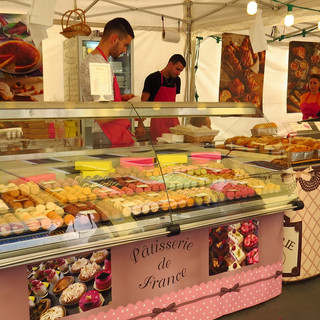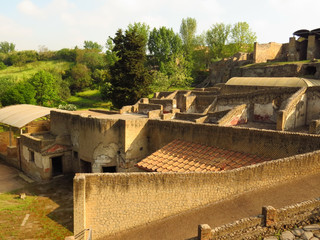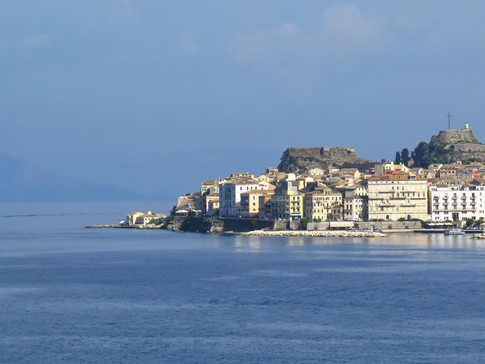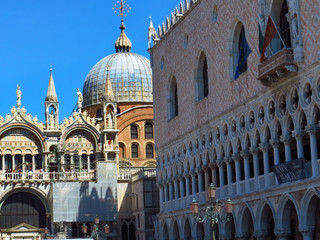First half of Mediterranean Cruise
- J & J Cosgrove
- Nov 27, 2018
- 5 min read
Updated: Apr 22, 2020
We boarded the Oosterdam in Barcelona on April 18, 2018 with Susie, Sev, Helen and John.
Below is a map of the first half of our trip.

MARSEILLES, FRANCE – We had a relaxing morning as we wandered about the waterfront in this first port of call, getting adjusted to life on a cruise ship with so many menu items both at the table and onshore. The French rail workers were striking and held a protest near the waterfront – we opted to take a few photos and then move on.
MONTE CARLO, MONACO – This was the best presented port that we visited (clean, orderly, lots to see and do within walking distance of the dock). There were beautiful homes and boats, the Prince of Monaco’s Palace, St Paul’s Anglican Church where Grace Kelly was married in 1956, Oceanographic Museum (once headed by Jacques Cousteau) with its aquarium. The scent of jasmine will always remind me of this trip as we encountered it many times.
LIVORNO, ITALY – At this port, we took a tour of Cinque Terre and Pisa with Leonardo of Viator Tours. The “five lands” are perched on the hillsides of northern Italy, overlooking the Ligurian Sea. We drove, first down and then back up the hills along very twisty roads, past many vineyards and olive trees. The tour was so packed with new sights, we had trouble remembering where we had been during this day. And we wish we had more time in Pisa but what we saw was lovely and so great to photograph.
PortoVenere – not technically one of the 5 towns but a lovely place to start our tour, with some interesting highlights.
Corniglia – this little place offered us a view of the coast line north to the northern-most town of Monterosso.
Vernazza – many visitors reach this waterfront town by train or boat. We arrived by foot from the gate which stopped car traffic, part way down the hill.
Manarola – this icon town clings to the hillside and provides an outstanding opportunity for photographs.
Piza – the leaning bell tower of the Cattedrale de Pisa had been newly cleaned so we enjoyed ½ hour of photography (not nearly enough time in this very picturesque location).
CIVITEVECCHIA, Italy (“old city”) – This small town which is Rome’s port, has really tried to improve it’s waterfront area and shopping plaza so that cruisers who don’t opt to visit Rome by train, can have a relaxing day of shopping and exploring the town.
NAPOLI, ITALY (Naples) – Rather than wandering about Napoli, which doesn’t have much to offer, we took a tour to Pompeii. The archaeological site looks just like the photos from Grade 7 Social Studies textbooks but actually being there and walking the streets and going into the buildings makes you realize the immensity of the disaster in AD79. Alberto, our guide, explained much about the daily activities in this small Roman city.
After Pompeii, we headed off to the Naples National Archaeological Museum to see some of the unearthed artifacts from Pompeii. As we caught a bit of pizza lunch on a street corner, we were assaulted by the sounds of the traffic – car horns, ambulance sirens, motorcycles, street hawkers. What an incredible din!
The museum was typical with artifacts displayed in glass cases along with mosaics and large sculptures AND a large quantity of penis symbols (what was that all about?). In one section was an interesting scale model of the city of Pompeii (can anyone else see the fish outline?)
TAORMINA, ITALY on the island of Sicily – We were not so keen to see a steaming volcano (Mt Etna) looming over the bay as we anchored, since we had just visited Pompeii with it’s deadly volcano. However, Taormina proved to be a delightful little town perched on the side of the hillside above the bay. We strolled from shop to shop along with other tourists and some school kids with their matching ball caps. Here, we had our first experience with Limoncello as some stores gave free samples of this strong, lemony liqueur.
Jeannie's dad had been in Sicily with the British 8th Army during the Allied push north from North Africa in 1943. We had looked at visiting a war memorial south of Taormina but felt that the 4 hour taxi round trip would have been rushed and very expensive. Something to return to, one day?
CORFU, GREECE – We walked from the dock along the waterfront toward the Old Town of Corfu. We were surprised to see many of the buildings, even those with waterfront views, were in disrepair. A real history buff would find the Old and New Fortresses (both Venetian) interesting along with the Museum of Asian Art. We probably should have arranged a land tour as many speak of the lovely beaches on this island.

DUBROVNIC, CROATIA – This walled city was one of our favourite spots on the cruise. We met our tour guide, Roberto, who led us thru the streets and alleyways for the morning, with an interesting commentary on the political and cultural overview of the history of Adriatic region. Roberto spoke to us about the loss of life and damage from the Serbian shelling in 1991. We spend the afternoon walking thru many side streets and up and down many stairs within the city. We opted to stay in the city for dinner so we could walk the 16th century walls as the sun settled over the Mediterranean. The views of the colourful roofs and the Pallid Swifts cruising the walls looking for flying insects, did not disappoint.
KOTOR, MONTENEGRO – This town is a smaller version of Dubrovnik as a walled city with the addition of a trail up the mountainside to a church and the castle of St. John at the top. We didn’t take the challenge of doing the trail but enjoyed walking the walls and checking out a local grocery store.
VENICE, ITALY – Venice is everything we’ve seen in photos with the added bustle of the boats in the Canal Grande. The water-traffic was a bit overwhelming since the canals are like a high-speed freeway with private boats, taxis, moving ‘vans’, garbage ‘trucks’ and the vaporetti ‘buses’ (the public transit system).
Since we were staying overnight, we spent the first day doing a free walking tour of some of the islands that make up the inner city.
Day 2, a scheduled tour of San Marco Square and St Mark’s Basilica had been arranged by the John and Helen. Since it was so crowded at the church and our guide’s accent was difficult to understand in our headsets, we opted out of the tour to do our own wandering of the city.
We saw many ‘winged lion’ symbols in Venice. We had learned in Dubrovnik about the Venetians’ role as a major shipping, economic and military power in the Adriatic Sea.
Next up: Our second 12 days on the Holland America cruise






























































































































Comments